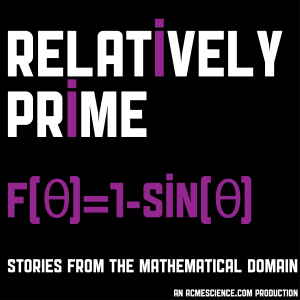It’s been a busy few months! As per our name, here’s an aperiodically-timed round up of things that have happened in the world of maths in the last few months.
You're reading: Posts Tagged: Tim Harford
- Tim Harford, journalist and presenter of BBC Radio programme More or Less, appointed OBE for services to Improving Economic Understanding.
- Deirdre Houston, Deputy Principal, Northern Ireland Statistics and Research Agency, appointed OBE for services to Integrated Education in Randalstown.
- Valsa Koshy, Emeritus Professor, Brunel University and mathematics education researcher, appointed MBE for services to Education.
Mathematical Objects: Auctioneer’s Hammer with Tim Harford

A conversation about mathematics inspired by an auctioneer’s hammer. Presented by Katie Steckles and Peter Rowlett, with special guest Tim Harford.

Podcast: Play in new window | Download
Subscribe: RSS | List of episodes
Particularly mathematical New Years Honours 2019
It’s that time of year when we take a look at the UK Government’s New Years Honours list for any particularly mathematical entries. Here is the selection for this year – any more, let us know in the comments and we’ll add to the list.
Get the full list here.
Relatively Prime Recap: Season 2, Episode 7: $f(\theta) = 1 – \theta$
I’d have written it as $r = 1 – \theta$, myself, but even then it’s not much of a heart. However, that’s pretty much my biggest gripe about this episode, the penultimate in series 2 of Samuel Hansen’s one-of-a-kind mathematics podcast, Relatively Prime.
Episode 7 is subtitled “Dating in the mathematical domain”, and looks at the maths involved in dating and relationships, and begins with some of the comments Sam’s dating profile received from non-mathematicians. Now, denizens of the dating world: Samuel has many flaws and failings; picking on the fact that he’s a mathematician seems a little arbitrary and unfair, like deciding not to vote for Donald Trump because you don’t like his tie. I have this unfamiliar sensation. Could it be… surely not? It appears that I feel a little sorry for Samuel. Don’t tell him, ok?
Podcasts for a university mathematics student
Yesterday, I was asked by Mariana Farinha for podcasts I would recommend to a college student of Mathematics. I assume this is college in the American sense, i.e. university. Though targetting an audience is usually a broad business, so with a suitable margin of error I replied with a few, retweeted the request and a few others replied. Here are the suggestions. What would you recommend? Leave a comment!
More Or Less integer sequence solution revealed (spoilers!)
Radio 4 maths police More or Less took time off from calling out journalists and deputy prime ministers for their misuse of statistics this series to sneak a hidden maths puzzle into their show. The first five episodes were “brought to us by” the numbers, respectively, 1, 49, 100, 784 and 1444. Listeners were invited to work out what number would bring us the final episode.
Integer sequence puzzle in More or Less
More or Less, the BBC’s maths and statistics radio show, has been sneakily doing a puzzle on us for the last few weeks. The episodes in the series so far have each been ‘brought to you’, Sesame Street-style, by a different number. But what will the final episode be? Can you crack the integer code and solve the puzzle?
The puzzle was announced in the programme broadcast on the 27th of September; you can listen to it on the Radio 4 site or as a podcast (the puzzle bit is at 27:05). If you think you’ve solved the riddle, email More or Less through their website.
The episodes so far have been brought to you by the numbers 1, 49, 100, 784 and 1444. (It’s not in the OEIS; we’ve checked). You can find out if you’re right when the final episode in the series goes out, on BBC Radio 4 at 4.30pm on Friday 4th October.

